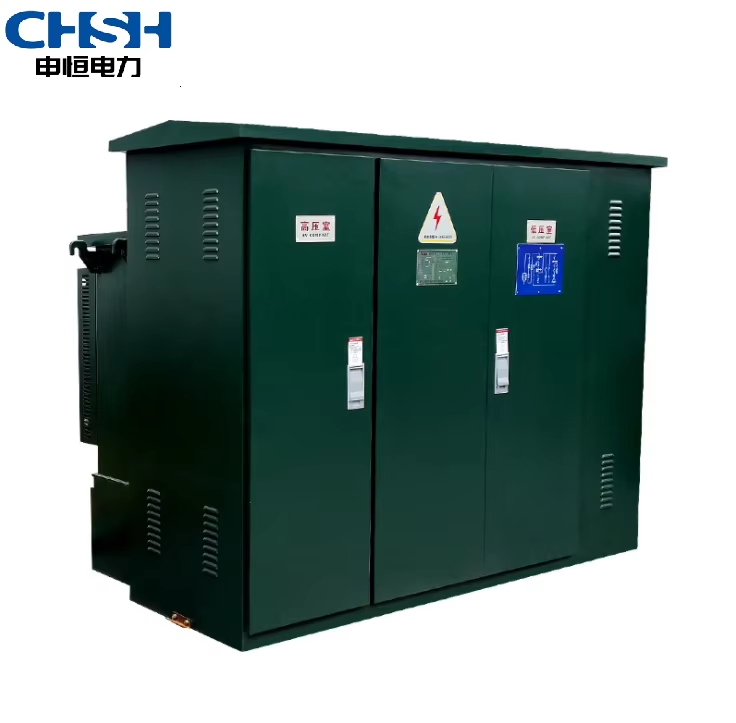1. Intelligent and IoT-Enabled Integration
ZGS American-style prepackaged substations are expected to evolve into intelligent nodes within smart grids, leveraging IoT (Internet of Things) and AI technologies. For instance, integrating smart sensors to monitor real-time parameters like oil temperature, load current, and transformer health (e.g., partial discharge detection) will enable predictive maintenance and fault diagnosis . This aligns with the global trend of smart substation development, where systems are designed to self-diagnose and optimize operations through data analytics . Additionally, the existing oil-immersed load switches in ZGS models may be upgraded with motorized actuators and communication modules to support remote control and grid automation, as mentioned in the product’s current design .
2. Enhanced Energy Efficiency and Green Technology
To comply with stricter global energy efficiency standards (e.g., GB 20052-2020 in China) , ZGS substations will likely adopt higher-efficiency transformers, such as amorphous alloy cores (e.g., S13 series), which reduce no-load losses by 70–80% compared to traditional silicon steel cores . This transition aligns with the Chinese government’s Transformer Energy Efficiency Improvement Plan (2021–2023), aiming to increase the proportion of high-efficiency transformers in operation by 10% . Furthermore, the integration of renewable energy interfaces (e.g., solar and wind) and energy storage systems (ESS) will enable ZGS substations to support microgrids and distributed energy resources (DERs), as seen in photovoltaic applications .
3. Modular and Compact Design
ZGS substations will continue to prioritize modularization for rapid deployment and scalability. Current designs already feature split-box structures to avoid oil contamination , but future iterations may adopt prefabricated modules for easier customization and maintenance. For example, National Grid’s modular substation projects in China demonstrate how standardized designs reduce construction time by 20–70% while improving reliability . This trend will enhance adaptability to various scenarios, such as urban retrofits, industrial parks, and disaster recovery sites .
4. Advanced Digital Monitoring and Cybersecurity
The integration of digital twin technology and cloud-based platforms will allow real-time visualization and remote management of substation operations. Existing features like low-voltage phase-loss protectors may evolve into comprehensive intelligent auxiliary systems, combining environmental monitoring (e.g., humidity, temperature), fire detection, and access control . Cybersecurity measures will also strengthen to protect against cyber threats, ensuring data integrity and grid stability in interconnected systems.
5. Improved Environmental Resilience
ZGS substations will likely upgrade their IP protection ratings from the current IP43 to IP54 or higher, enhancing resistance to dust and water ingress . This improvement will enable deployment in harsh environments, such as coastal areas or industrial zones. Additionally, the use of high-fire-point oils and eco-friendly materials (e.g., biodegradable insulation fluids) will reduce environmental risks and comply with stricter regulations.
6. Cost Optimization and Standardization
To balance performance and affordability, ZGS may optimize component design, such as replacing traditional SF6 load switches with more cost-effective alternatives while maintaining reliability. The adoption of standardized interfaces and international certifications (e.g., IEC, ANSI) will facilitate global market expansion, as seen in the integration of distributed energy resources in photovoltaic projects .
7. Grid Modernization and Resilience
ZGS substations will play a critical role in grid modernization by supporting grid-edge technologies, such as demand response, voltage regulation, and grid-forming inverters. Their compact size and prefabricated nature make them ideal for retrofitting aging grids or expanding distribution networks in underserved areas. For instance, mobile substations (as highlighted by TBEA) are already being used for emergency power restoration and temporary load shifting , a trend that ZGS may further explore.
Conclusion
The future of ZGS American-style prepackaged substations lies in intelligent integration, energy efficiency, and adaptability to evolving grid demands. By embracing IoT, modular design, and green technologies, ZGS will position itself as a key player in smart grid transformation, enabling sustainable and reliable power distribution worldwide.
Post time: Jun-13-2025















